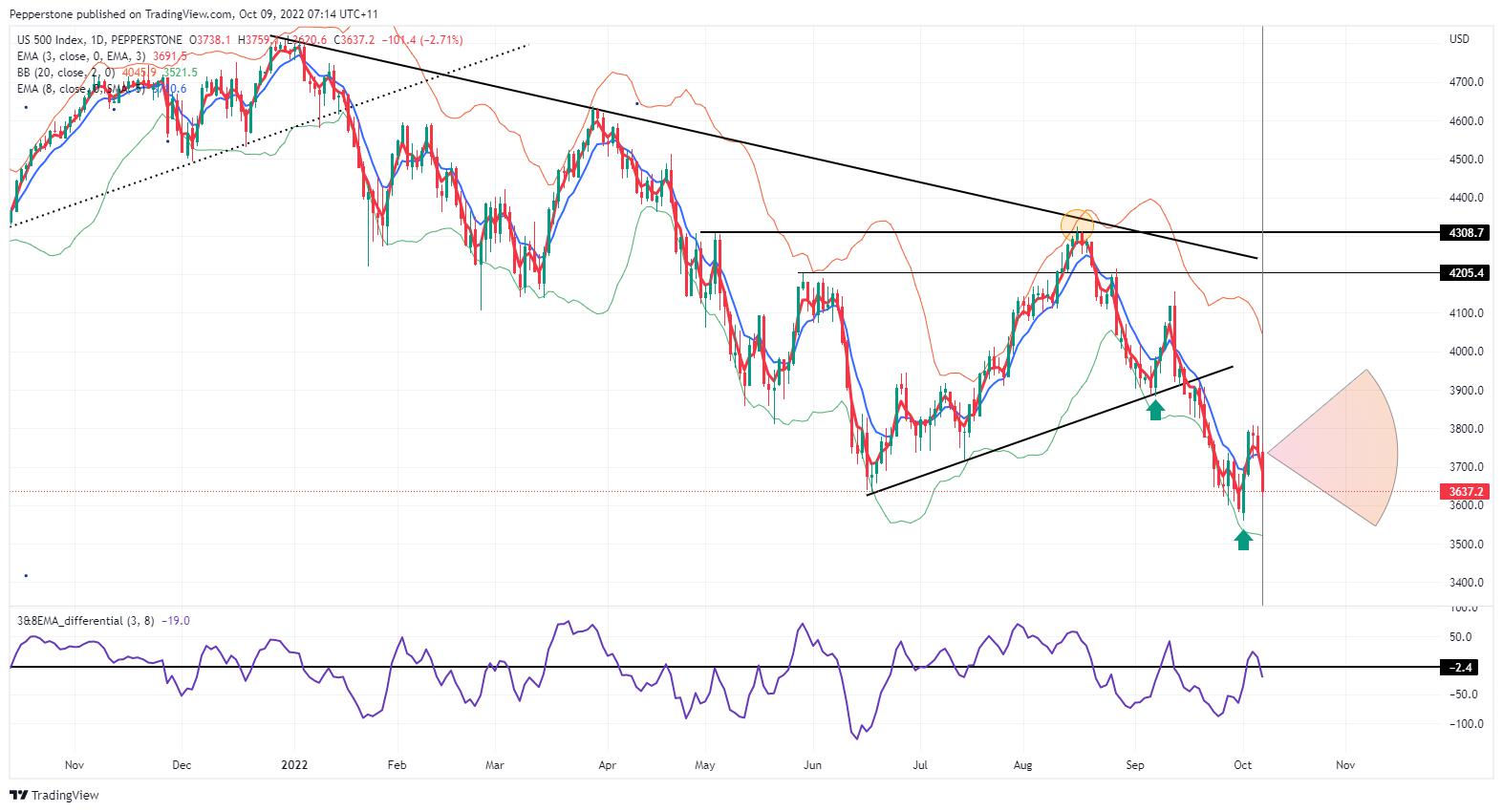The market opened last week on an optimistic tone, positioning on the belief that we could see something resembling even a minor pivot in the various dialogues. With the benefit of hindsight, this exposure couldn’t have been more incorrect, and central bankers pushed back hard. Fed members Mester, Cook, Kashkari and Evans all gave different degrees of hawkish rhetoric and were joined by the Bank of Canada’s Macklem and ECB member Nagel in shattering the risk bulls’ dreams.
The RBNZ pushed back as well, with a rising concern on currency weakness and the growing probability of importing inflation – the RBNZ are obviously not the only central bank concerned about this dynamic and there has been a thorough analysis of the Fed’s balance sheet, where we’ve seen a $42b increase on the week in the Fed’s repo (RRP) facility - portraying a rising probability that foreign central banks are drawing down US Treasury holdings to build cash position that could be used to intervene and support currency weakness.
US500 daily

So, any glimmer of hope that the Fed would open the door to a pivot was slammed shut - where this narrative was later confirmed with a US payrolls report which highlighted that the US labour market is tight enough to warrant another 75bp hike on 2 November. While we saw a slight softening in the headline level of job creation (to 263k), the bulls were clearly positioned for an unemployment rate of 3.8% (not 3.5%), and a higher participation rate, and when we marry this with a sizeable 4.8% rally in crude, and rising concerns of $100 a barrel again, a buyers strike ensued in risky assets (e.g equities), and it was all sellers of risk, with the NAS100 the posterchild of movement -3.9% on Friday and eyeing a new trend low.
In the week ahead, US CPI is the marquee event risk and when we see expectations that core CPI will rise 20bp to 6.5% (from 6.3%), it will give the Fed even more fodder to keep tightening financial conditions.
The short sellers are having it all their way – we have no central bank support and if anything they are welcoming a recession, that is not yet fully discounted into valuations or risk – geopolitical concerns are rising – bond yields are reversing and eyeing a re-test of recent highs. The bears will all point out that fed fund ‘terminal’ rate pricing has risen to 4.65% and could be ready to take another leg higher towards 5% if this week's US CPI comes in hotter. The USD will likely make new cycle highs against this backdrop, and I am constructive on a broad basis through this coming week.
Calls that “something will break” are rising.
Implied volatility has pushed higher, with the VIX index above 30% and margin FX implied volatility also on the rise – we see the highest expected move in the week ahead in the antipodeans, a function that if US core CPI comes in above 6.5% then the US500 and NAS100 could get chopped up once more and high beta margin FX (such as the AUD) will follow – I’m actually surprised USDJPY vols are as low as 10.1% given all the focus on central banks prepping for currency management/intervention – with USDJPY making new highs the prospect of the MoF intervening to halt the JPY move is elevated – it’s probably no surprise that 3 or 4 open USDJPY positions (held by Pepperstone clients) are held short, and the rapid spike lower on the 22 Sept still fresh in many traders’ minds.
GBPUSD trades sub-1.1100 and after the failed break of the March 2020 low on Wednesday we’ve come down to test the 38.2% fibo of the 1.0352 to 1.1496 rally – all eyes on the UK gilt market as we push toward the end of the BoE’s temporary 20yr+ gilt buying exercise that halted a dysfunction bond market and rising concerns around the LDI pension industry – with interbank liquidity in GBPUSD already shot to pieces and spreads widening, if UK long-end bond yields head higher GBP could be vulnerable to another one-way selling frenzy.
By way of the big-ticket event risks
US CPI (13 Oct 23:30 AEDT) – consensus is for 8.1% YoY on headline CPI and 6.5% on core – the economist range for core CPI sits between 6.6% and 6.4%. If core inflation prints above 6.5% it would be another blow for risk assets and send the USD higher. The marquee event risk this week.
- The form guide suggests a higher core CPI with 10/12 reading above consensus – the USD has risen 75% of these occurrences over the 30 minutes from the release. A number above 6.6% with headline CPI at 8.3% would spur big volatility.
The end of the BoE’s bond-buying program (14 Oct) – as detailed, this is a huge known unknown and given poor liquidity in the bond and margin FX markets we could see renewed fireworks for GBP traders – we also get 6 BoE speakers, who will get more attention given the wrap-up of the bond-buying program.

US retail sales (14 Oct 23:30 AEDT) – the market is keen to see if consumption wanes due to tighter financial conditions – the consensus is for 0.2% MoM gains in sales
The start of US Q3 earnings – Blackrock, JP Morgan, Wells Fargo, Morgan Stanley, and Citigroup the names to watch – aside from trading these names and the influence they may have on the broader US500, the XLF ETF could be one to put on the radar.
China’s 20th Peoples Congress (16 Oct) – unlikely to cause any major fireworks for next week’s open but could get some focus from those who trade USDCNH, and our range of Chinese and HK equity indices.
11 Fed speakers – Comments from Lael Brainard will be closely watched – but another week where the Fed could push back on the pivot and keep the foot down fighting inflation.

Related articles
The material provided here has not been prepared in accordance with legal requirements designed to promote the independence of investment research and as such is considered to be a marketing communication. Whilst it is not subject to any prohibition on dealing ahead of the dissemination of investment research we will not seek to take any advantage before providing it to our clients.
Pepperstone doesn’t represent that the material provided here is accurate, current or complete, and therefore shouldn’t be relied upon as such. The information, whether from a third party or not, isn’t to be considered as a recommendation; or an offer to buy or sell; or the solicitation of an offer to buy or sell any security, financial product or instrument; or to participate in any particular trading strategy. It does not take into account readers’ financial situation or investment objectives. We advise any readers of this content to seek their own advice. Without the approval of Pepperstone, reproduction or redistribution of this information isn’t permitted.


